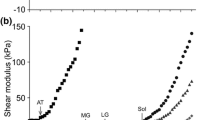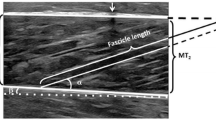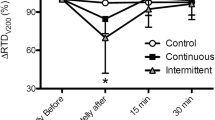Abstract.
The purpose of this study was to examine in vivo whether passive stiffness in human muscles was related to the elasticity of tendon structures and to performance during stretch-shortening cycle exercise. Passive torque of plantar flexor muscles was measured during passive stretch from 90° (anatomical position) to 65° of dorsiflexion at a constant velocity of 5°·s–1. The slope of the linear portion of the passive torque-angle curve during stretching was defined as the passive stiffness of the muscle. The elongation of the tendon and aponeurosis of the medial gastrocnemius muscle (MG) was directly measured using ultrasonography during ramp isometric plantar flexion up to the voluntary maximum. The relationship between the estimated muscle force of MG and tendon elongation was fitted to a linear regression, the slope of which was defined as the stiffness of the tendon. In addition, the dynamic torques during maximal voluntary concentric plantar flexion with and without prior eccentric contraction were determined at a constant velocity of 120°·s–1. There were no significant correlations between passive stiffness and either the tendon stiffness (r=0.19, P>0.05) or the relative increase in torque with prior eccentric contraction (r=–0.19, P>0.05). However, tendon stiffness was negatively correlated to the relative increase in torque output (r=–0.42, P<0.05). The present results suggested that passive stiffness was independent of the elasticity of tendon structures, and had no favourable effect on the muscle performance during stretch-shortening cycle exercise.
Similar content being viewed by others
Author information
Authors and Affiliations
Additional information
Electronic Publication
Rights and permissions
About this article
Cite this article
Kubo, K., Kanehisa, H. & Fukunaga, T. Is passive stiffness in human muscles related to the elasticity of tendon structures?. Eur J Appl Physiol 85, 226–232 (2001). https://doi.org/10.1007/s004210100463
Accepted:
Issue Date:
DOI: https://doi.org/10.1007/s004210100463




